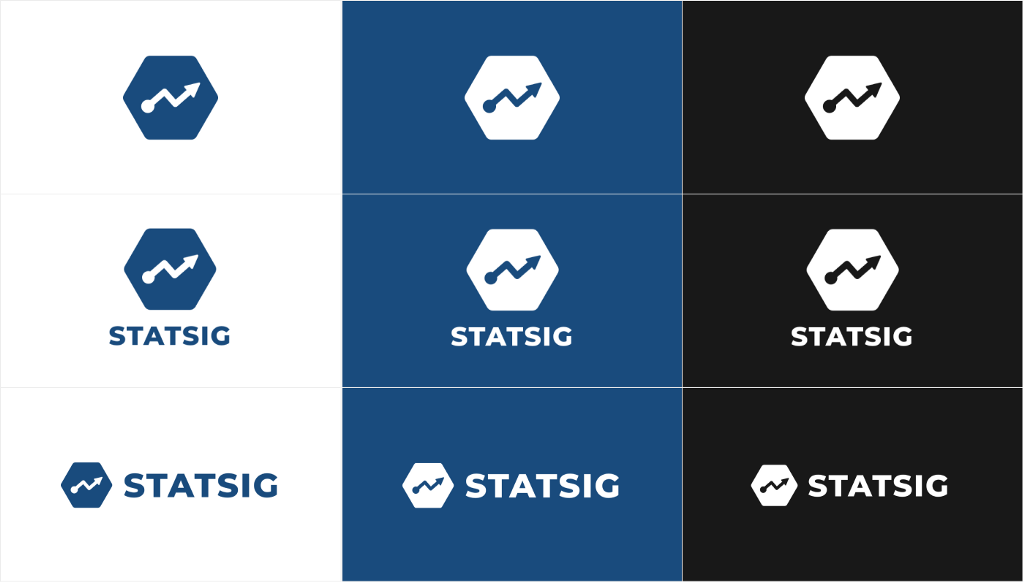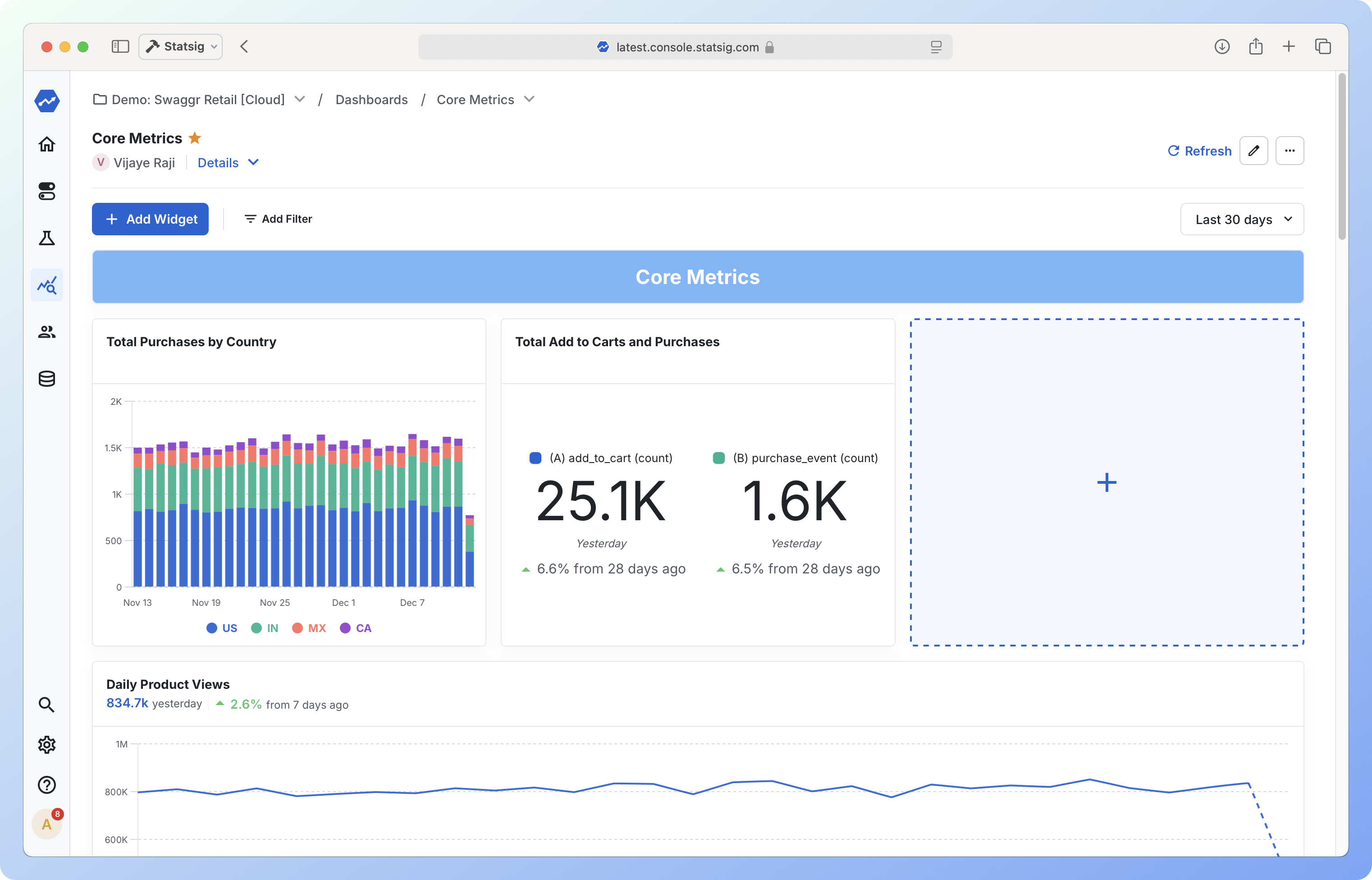
Statsig: Complete Buyer's Guide
Unified experimentation platform for developers
Statsig positions itself as a unified experimentation platform that consolidates A/B testing, feature flags, and analytics into a single developer-centric solution. The platform serves companies processing substantial event volumes, with infrastructure designed to handle enterprise-scale implementations exceeding 1 trillion daily events.
Market Position & Maturity
Market Standing
Statsig occupies a unique position in the experimentation market by targeting technically sophisticated organizations seeking cost-efficient alternatives to premium enterprise solutions. The platform competes primarily on cost efficiency and technical sophistication rather than marketing-friendly features.
Company Maturity
Company maturity indicators suggest a growing but still-developing organization. The platform demonstrates strong technical capabilities with infrastructure supporting enterprise-scale implementations.
Growth Trajectory
Customer base concentration in tech/SaaS, e-commerce, and finance sectors reflects successful penetration among technically sophisticated early adopters.
Industry Recognition
Market validation emerges through positive user sentiment among technical users, with AWS Marketplace ratings indicating satisfaction with statistical capabilities and platform reliability[136].
Strategic Partnerships
Strategic partnerships and ecosystem development appear less mature than established players with dedicated customer success programs and extensive partner networks.
Longevity Assessment
Market consolidation risks exist as the current vendor ecosystem will likely experience consolidation, though Statsig's technical differentiation and cost positioning may provide competitive advantages.
Proof of Capabilities
Customer Evidence
OpenAI's Engineering Manager reported significant scaling capabilities, enabling hundreds of experiments quarterly across large user bases[141].
Quantified Outcomes
Brex achieved efficiency gains and cost savings after consolidating analytics and experimentation tools, though specific metrics require verification due to source accessibility limitations.
Case Study Analysis
Implementation timelines typically require 3-6 weeks for mid-market deployments, with enterprises reporting 8-12 weeks for full integration.
Market Validation
Market validation emerges through adoption among tech/SaaS, e-commerce, and finance sectors, reflecting successful penetration among data-driven organizations requiring rigorous experimentation capabilities.
Competitive Wins
Customer success patterns show strongest outcomes among technically sophisticated organizations with substantial traffic volume.
Reference Customers
Enterprises processing millions of monthly events report higher satisfaction levels, while implementations requiring >50,000 monthly visitors show better prediction reliability for AI-driven features.
AI Technology
Statsig's AI capabilities center on advanced statistical frameworks rather than generative AI features that characterize some competitors.
Architecture
Technical architecture emphasizes SDK-based integration approaches that may reduce deployment complexity for development-led implementations. The platform's edge computing integration with platforms like Vercel may reduce latency compared to centralized competitors.
Primary Competitors
Primary competitors include established enterprise players like Optimizely, Adobe Target, and VWO, along with emerging alternatives like AB Tasty and LaunchDarkly.
Competitive Advantages
Competitive advantages include unified platform economics that eliminate separate fees for experimentation, analytics, and feature flags. Advanced statistical frameworks like CUPED variance reduction and sequential testing provide technical sophistication that appeals to data-driven organizations.
Market Positioning
Market positioning emphasizes developer-first workflows and statistical rigor over user-friendly interfaces.
Win/Loss Scenarios
Win scenarios include organizations prioritizing cost efficiency at scale, technical flexibility for custom integrations, and statistical sophistication for rigorous experimentation. Loss scenarios typically involve requirements for marketing-friendly interfaces, comprehensive enterprise compliance, or advanced generative AI features where established competitors provide superior capabilities.
Key Features

Pros & Cons
Use Cases
Integrations
Pricing
Featured In Articles
Comprehensive analysis of AI A/B Testing for AI Marketing & Advertising for AI Marketing & Advertising professionals. Expert evaluation of features, pricing, and implementation.
How We Researched This Guide
About This Guide: This comprehensive analysis is based on extensive competitive intelligence and real-world implementation data from leading AI vendors. StayModern updates this guide quarterly to reflect market developments and vendor performance changes.
142+ verified sources per analysis including official documentation, customer reviews, analyst reports, and industry publications.
- • Vendor documentation & whitepapers
- • Customer testimonials & case studies
- • Third-party analyst assessments
- • Industry benchmarking reports
Standardized assessment framework across 8 key dimensions for objective comparison.
- • Technology capabilities & architecture
- • Market position & customer evidence
- • Implementation experience & support
- • Pricing value & competitive position
Research is refreshed every 90 days to capture market changes and new vendor capabilities.
- • New product releases & features
- • Market positioning changes
- • Customer feedback integration
- • Competitive landscape shifts
Every claim is source-linked with direct citations to original materials for verification.
- • Clickable citation links
- • Original source attribution
- • Date stamps for currency
- • Quality score validation
Analysis follows systematic research protocols with consistent evaluation frameworks.
- • Standardized assessment criteria
- • Multi-source verification process
- • Consistent evaluation methodology
- • Quality assurance protocols
Buyer-focused analysis with transparent methodology and factual accuracy commitment.
- • Objective comparative analysis
- • Transparent research methodology
- • Factual accuracy commitment
- • Continuous quality improvement
Quality Commitment: If you find any inaccuracies in our analysis on this page, please contact us at research@staymodern.ai. We're committed to maintaining the highest standards of research integrity and will investigate and correct any issues promptly.